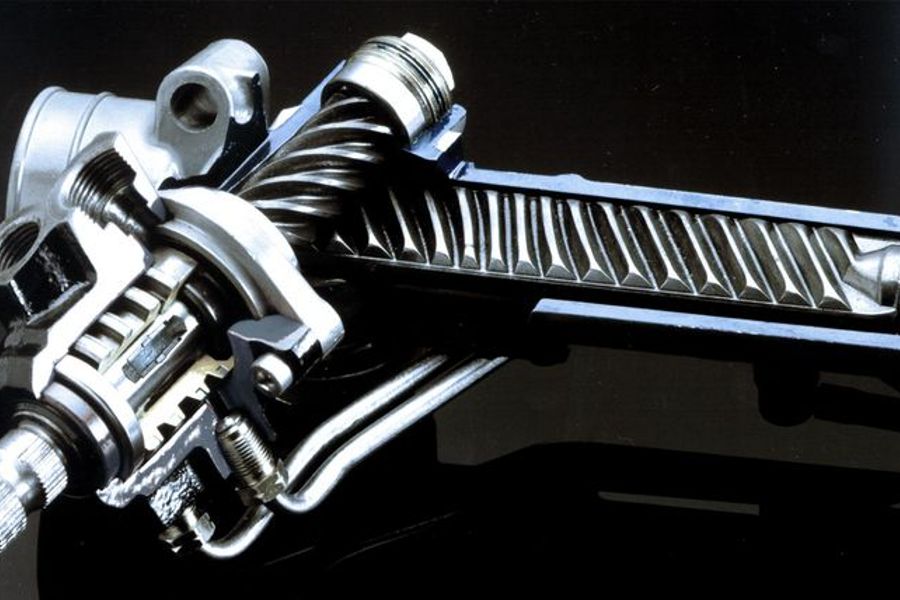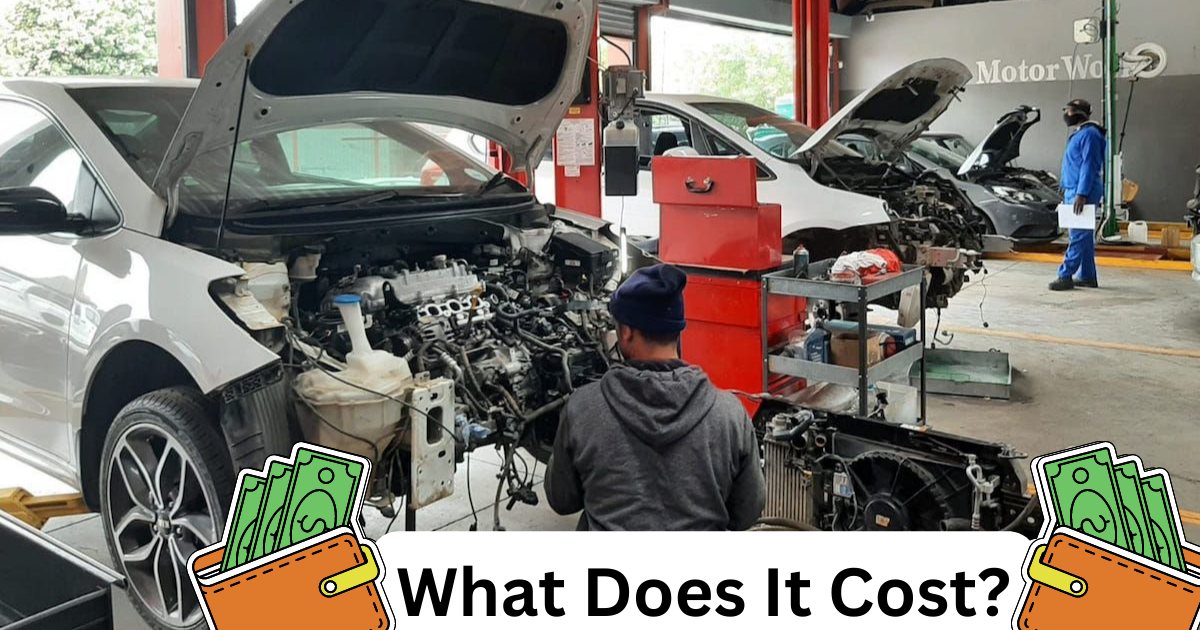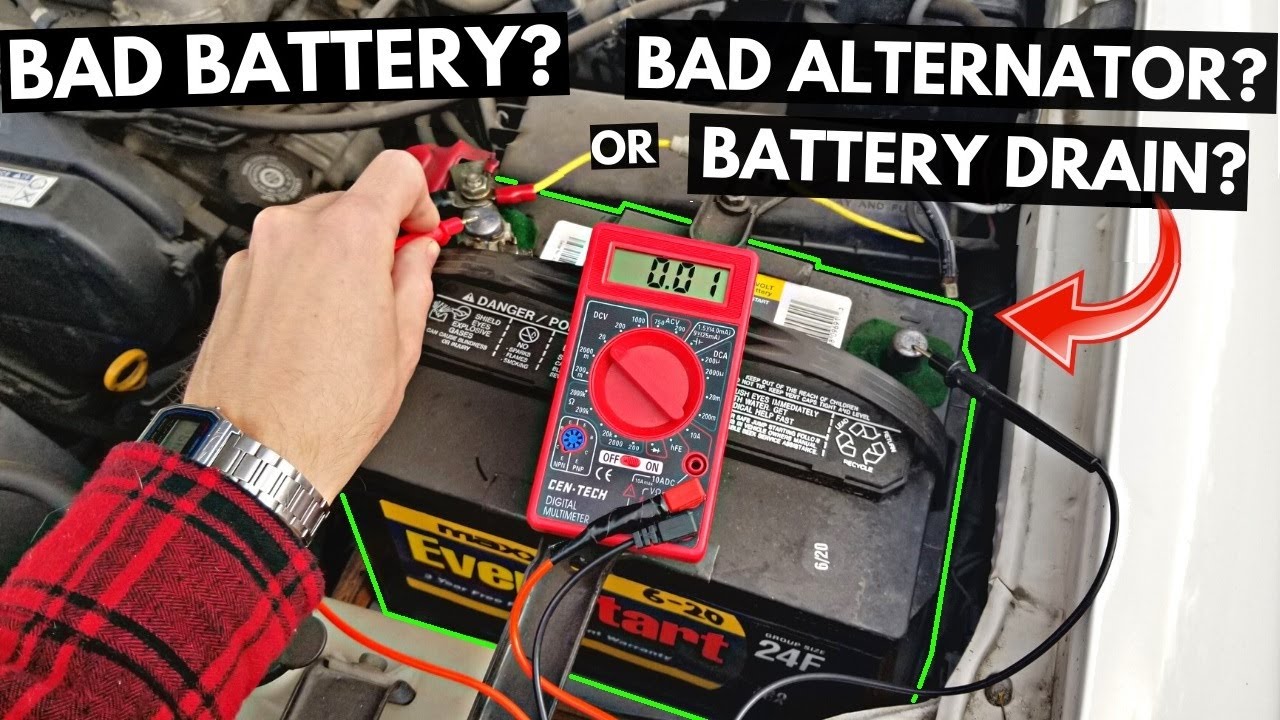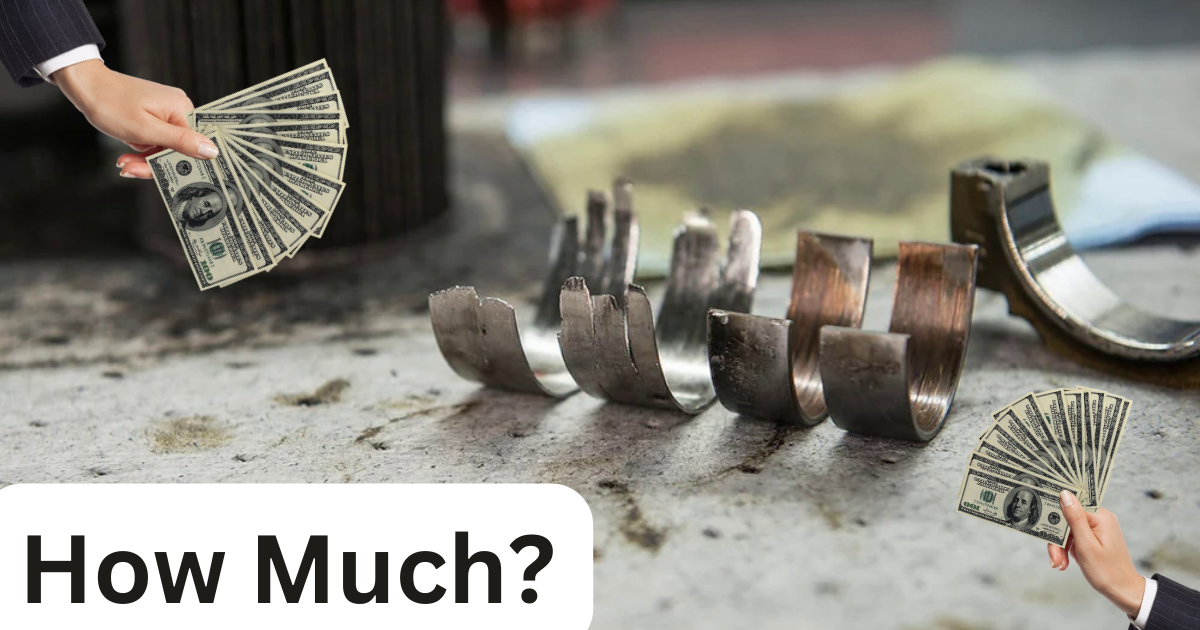Power steering mechanisms make turning your vehicle a stress-free task. Driving with bad steering can be frustrating, especially if you enjoy the convenience and ease of power steering. The systems that make up a power steering abound, including the rack and pinion system.
As with most components in any automobile, the rack and pinion system is made up of several moving components. With time these components tend to wear down and may require replacements. When this happens, people often ask, “how much does it cost to replace the rack and pinion?“
Replacing a rack and pinion system does not come cheap, as it is a very labor-intensive adventure. As a matter of fact, replacing your rack and pinion will cost you about 2000 dollars. You can expect to pay about 300 to 1500 dollars on spare parts alone and about 500 to 1000 dollars in labor.
Understanding the rack and pinion system can be an arduous task. Hence, we have put together this comprehensive guide to help you understand what it is, the symptoms of a failing rack and pinion system, its causes and effects, and a general overview of your steering system. Let us dive in fully.
What Is A Rack And Pinion?
The rack and pinion system is a type of steering mechanism used in vehicles to convert rotational motion into linear motion. It is made up of a rack, the linear gear, and a pinion, the small circular gear. The rack and pinion system is typically found in front-wheel drive vehicles and is known for its precision and ease of use.
The rack and pinion system connects the steering wheel to the pinion gear. When the steering wheel is turned, the pinion gear rotates and meshes with the rack. The movement of the pinion gear causes the rack to move in a linear direction, which in turn moves the vehicle’s wheels.
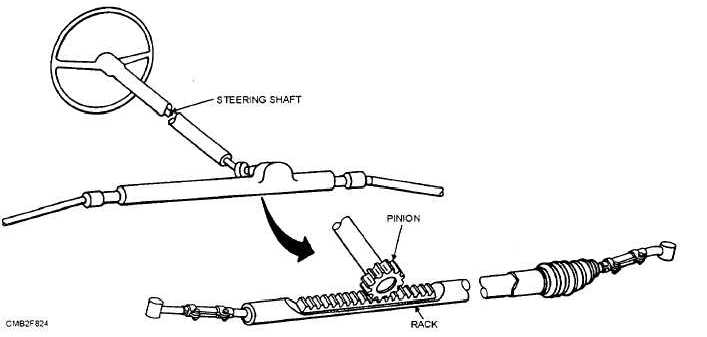
The amount of linear movement in the rack corresponds to the amount of rotational movement in the pinion gear, which is determined by the gear ratio of the system. These days, most small and medium-sized cars, as well as crossover utility vehicles, use rack, and pinion steering. Instead of a rack and pinion, larger trucks and heavy-duty vehicles often employ a recirculating ball steering system.
Rack and Pinion Replacement Cost
Rack and pinion replacement is a common repair for vehicles that use this type of steering system. The average rack and pinion replacement cost can range from $800 to $2000. However, this cost can vary depending on several factors, such as the vehicle’s make and model, the repair’s location, and the type of repair shop or mechanic.
| Vehicle | Rack & Pinion Cost | Labor |
|---|---|---|
| Honda Civic | $100 – $1,010 | $300 – $600 |
| Subaru Forester | $200 – $2,400 | $400 – $800 |
| Honda Odyssey | $450 -$1,200 | $308-$590 |
| Toyota Camry | $150 – $740 | $590 -$800 |
| Ford Explorer | $100 – $262 | $250 – $570 |
| BMW 325i | $151-$1,019 | $180-$390 |
| Nissan Murano | $170 – $650 | $290 – $750 |
| Honda Accord | $100 -$1,050 | $500 – $650 |
| Toyota Tacoma | $90 – $900 | $200 -$400 |
| Chevy Chrysler | $180 – $450 | $170 – $500 |
For example, luxury vehicles often require specialized parts and labor, which can increase the repair cost. Additionally, the labor cost may vary depending on the location of the repair. A repair in a major metropolitan area may be more expensive than a repair in a rural area.
9 Factors That Affect Cost Of Rack And Pinion Replacement
To further understand the variation in the cost of replacing a rack and pinion system, we will look into some core cost-determining factors.
- Make and Model of Vehicle: The make and model of your vehicle can affect the cost of rack and pinion replacement. Luxury vehicles may have a higher cost due to the use of specialized parts and labor.
- Location of Repair: The location of the repair can also affect the cost of rack and pinion replacement. Repairs in urban areas may be more expensive than those in rural areas.
- Type of Replacement Parts Used: The type of replacement parts used can also affect the cost of rack and pinion replacement. OEM (original equipment manufacturer) parts are typically more expensive than aftermarket parts.
- Labor Costs: Labor costs can also vary depending on the repair’s location and the technician’s experience.
- Additional Repairs: The rack and pinion replacement cost may be higher if additional repairs are needed, such as a steering gearbox replacement.
- Age and Condition of the Vehicle: The age and condition of the vehicle can also play a role in the cost of rack and pinion replacement. An older vehicle that has been well-maintained may have a lower cost for replacement compared to a newer vehicle that has been neglected and is in poor condition.
- Warranty: If the vehicle is still under warranty, the cost of rack and pinion replacement may be covered by the manufacturer. However, if the warranty has expired, the cost will have to be covered by the owner.
- The complexity of the Repair: The complexity of the repair can also affect the cost of rack and pinion replacement. A simple replacement may have a lower cost compared to a more complex repair that requires additional parts and labor.
- Insurance: Some insurance policies may cover the cost of rack and pinion replacement if it is a result of a collision or accident. However, it is important to check with the insurance company to determine the coverage.
In order to greatly cut down costs, we recommend you get multiple quotes from different repair shops and research the cost of replacement parts to get an idea of the total average cost.
Additional Replacement Costs To Consider
Other components of the rack and pinion system will likely need to be replaced at the same time as the main gears. Common extra charges for upgrading to a new rack and pinion steering system are detailed below.
Power Steering Lines
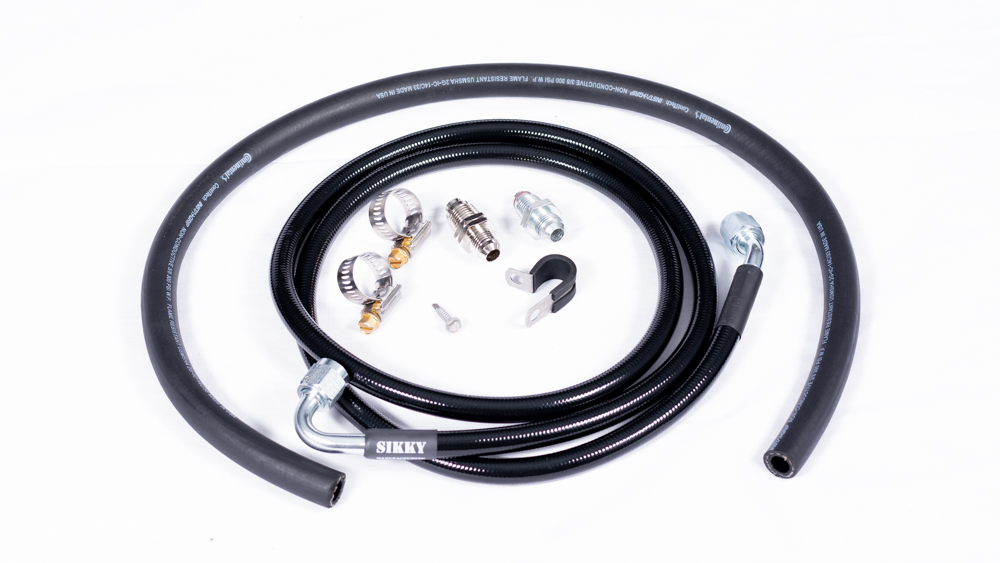
Power steering lines transport lubricating oil to the steering gear. If the rack and pinion are broken, the power steering lines will likely need to be replaced as well. It will cost you around $600 to replace your power steering line, consisting of $300 for the parts and $200 for the labor.
Tie Rods
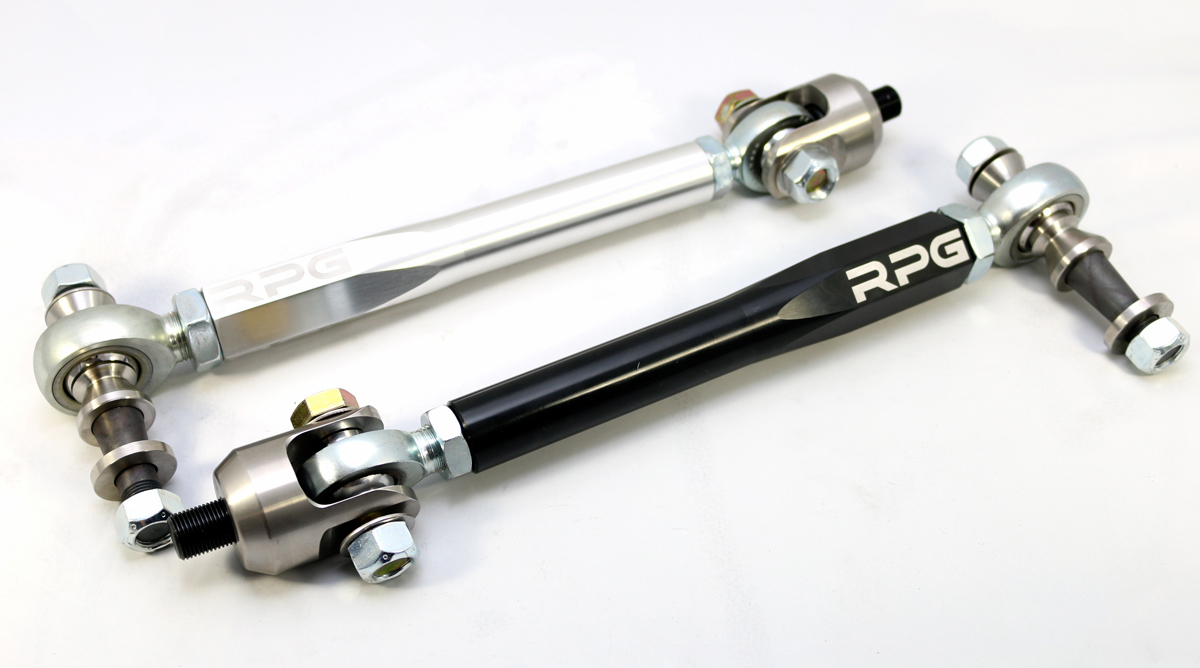
A tie rod is a part of the steering mechanism in a vehicle. It connects the steering rack to the steering arm on the wheel hub, allowing the driver to steer the vehicle by turning the steering wheel. There are typically two tie rods per vehicle, one on the left and one on the right.
While replacing the rack and pinion, it is recommended you purchase new tie rods instead of recycling the old ones. Replacing it can cost anywhere from 20 to 100 dollars.
Power Steering Pump
A power steering pumps fluid under pressure to assist in turning the wheels. The power steering pump is driven by a belt connected to the engine crankshaft and pressurizes the power steering fluid, which is then sent through hoses to the steering gear. This pressurized fluid helps to make steering the vehicle easier, especially at low speeds or when the vehicle is stopped.
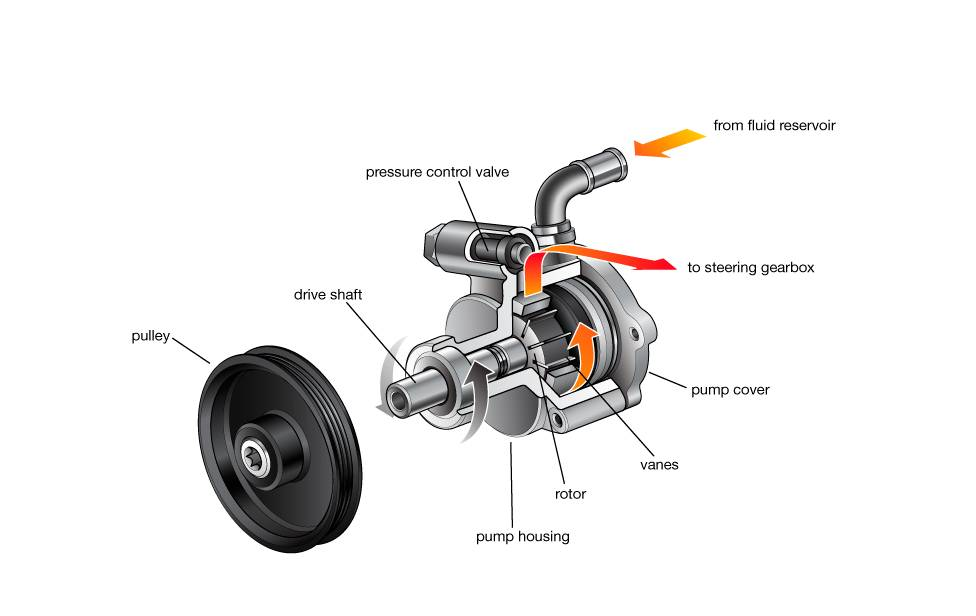
If the power steering pump fails, the vehicle will be harder to steer and will require more effort from the driver. Generally, replacing the power steering pump for most modern models of cars will cost you between $100 to 1000 for parts and an additional $200 for labor costs.
Power Steering Reservoir Tank
The power steering reservoir tank is a container that holds the power steering fluid, and it is usually located near the pump. The fluid is drawn from the reservoir and sent through the system before returning to the reservoir to be cooled and recirculated. The reservoir also acts as a reserve of fluid, so the system can continue to function even if there is a leak.
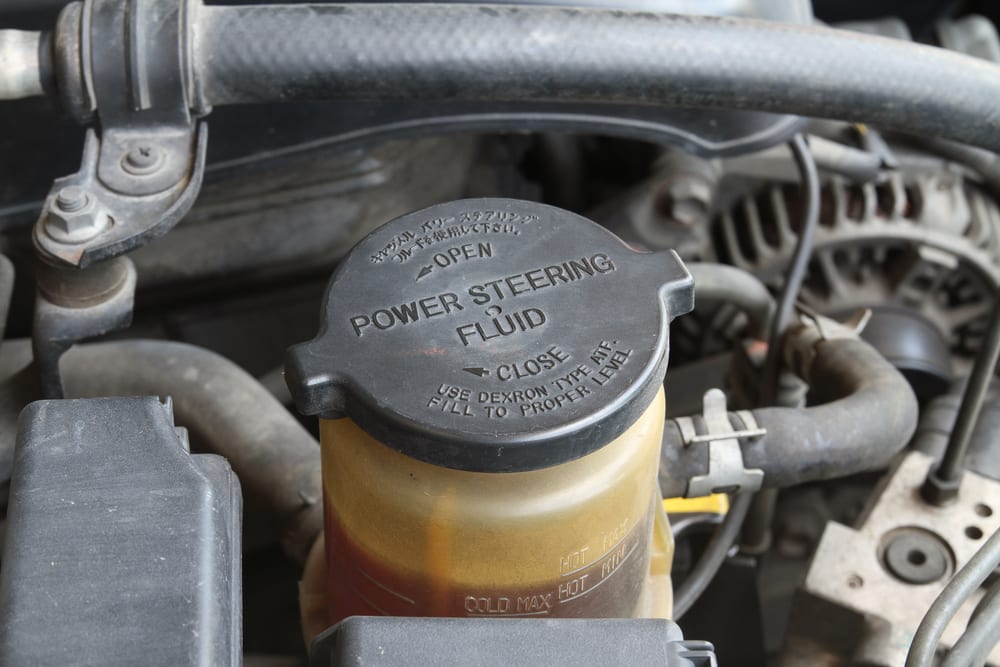
However, over time, the power steering reservoir tank can become damaged or worn out, leading to leaks or decreased fluid levels. In this case, it would need to be replaced. The cost of replacing a power steering reservoir tank can vary depending on the make and model of the vehicle, but it is typically around $175.
4 Signs Of A Damaged Rack And Pinion
A broken or damaged rack and pinion system will show telltale signs indicating you need to replace it. Hence keep an eye out for these signs in your vehicle.
Grinding Noises
As previously mentioned, a rack and pinion consist of interlocking gears. The rack and pinion system works by connecting the steering wheel to the pinion gear. When the steering wheel is turned, the pinion gear rotates and meshes with the rack.
Grinding noises will be heard if the gear teeth break or go out of alignment with each other, hence causing them to grind. This sign is mostly noticed when you are turning your wheels. It is dangerous to keep driving with a grinding noise as your axle can also be adversely affected.
Burnt Oil Smell
The grinding of gear teeth causes friction and subsequently generates heat. Overheating can cause gear oil to burn or smoke. This is a major problem that can indicate additional issues with your vehicle. We recommend you take your vehicle to a mechanic once you perceive the smell of burning oil.
Steering Fluid Leaks
Steering fluids mostly have a reddish-brown color. Hence if you see a fluid underneath your car, it may as well be that your steering fluid is leaking. A leaking steering fluid often indicates a faulty rack and pinion system and should not be overlooked.
Difficulty In Steering
The major function of a rack and pinion is to provide a smooth and seamless steering experience. So you can generally assume something is wrong when it suddenly starts getting difficult to steer or turn your vehicle.
Life Span of A Rack And Pinion
Generally, a rack and pinion system is built to last throughout the optimized life span of the vehicle. A well-maintained rack and pinion may never go bad and need replacement. It is, however, a good idea to periodically check your car by a qualified mechanic after about 100,000 miles. In doing this, you ensure that minor adjustments are made if needed.
How To Take Care Of Your Rack And Pinion
As previously mentioned, a well-maintained rack and pinion will last a lifetime of the vehicle. In this section, we will outline some basic things to do in order to ensure your rack and pinion are in optimum condition.
Regularly Check For Leaks
Regularly checking for leaks is one of the most important things you can do to maintain your rack and pinion. Examine the area surrounding the rack and pinion for evidence of oil or power steering fluid leaks. If you discover any leaks, it is essential to get them repaired immediately. Leaks can cause system damage and lead to major issues if left unchecked.
Monitor Your Power Steering Fluid Levels
Power steering fluid is necessary for the rack and pinion to work properly. The fluid lubricates the mechanism and facilitates the rack and pinion’s movement. Check the levels frequently and replenish them as necessary. Low power steering fluid levels can cause system damage and make it harder to control the car.
Check Your Alignment
Improper alignment can place additional stress on your rack and pinion, accelerating its wear. Have your alignment examined and adjusted as necessary. Misalignment can result in uneven tire wear, poor handling, and additional stress on steering components.
Do Not Ignore Noises
If you detect any strange noises or vibrations when turning the steering, you should have a professional examine your steering system. These signs may suggest that your rack and pinion or other steering components are malfunctioning and may need to be replaced.
Periodically Replace Oil, Filter, And Power Steering Fluid
Changing your oil, filter, and power steering fluid on a regular basis will help maintain your rack and pinion in good shape. The accumulation of sludge and debris in a system caused by old oil and filter might harm the rack and pinion. This service is advised every 3,000 miles or every three months.
By adhering to these guidelines and taking care of your rack and pinion, you may extend the system’s lifespan and keep your vehicle operating smoothly for many years. Remember to check for any wear and tear symptoms and get any problems immediately repaired by a skilled technician.
Conclusion
Rack and pinion replacement costs vary according to vehicle age and condition, location, and type of car. The average cost of rack and pinion replacement is about 2,000 dollars. This is expensive because it is a labor-intensive work done only by professionals.
Four signs that may indicate a malfunctioning rack and pinion include a burnt oil smell, grinding noises, difficulty in steering, and leaking steering fluid. It would be best to have your car checked by a mechanic once you notice any of these signs.
To properly maintain your rack and pinion, you could; regularly monitor your power steering fluid level, periodically replace oil and filters, and check your alignment. Doing this will go a long way in ensuring your rack and pinion will last for the vehicle’s lifetime.
This is all for now. We hope we have done justice to all your questions. Feel free to check out our other amazing content until I see you at the next one. Xoxo.
FAQ’s
What happens if you don’t change a damaged rack and pinion?
Driving with a damaged rack and pinion is very inappropriate and can, amongst others, damage your axle. A damaged rack and pinion also account for poor handling while steering the vehicle. You should visit your mechanic anytime you see the symptoms of a bad rack and pinion.
Are rack and pinion easy to replace?
Replacing a rack and pinion requires expertise. This is because it involves dismantling major components in your vehicle before getting to the rack and pinion. Replacing a rack and pinion is a bit expensive because a proper replacement requires many labor hours.
What are the signs of a damaged steering rack?
Generally, the smell of burnt oil, difficulty in steering, grinding noises, and fluid leaks indicate a problem with your racks and pinion system. These signs can also indicate another underlying problem and should be properly diagnosed to avoid further damage done to your car’s engine and axle.

